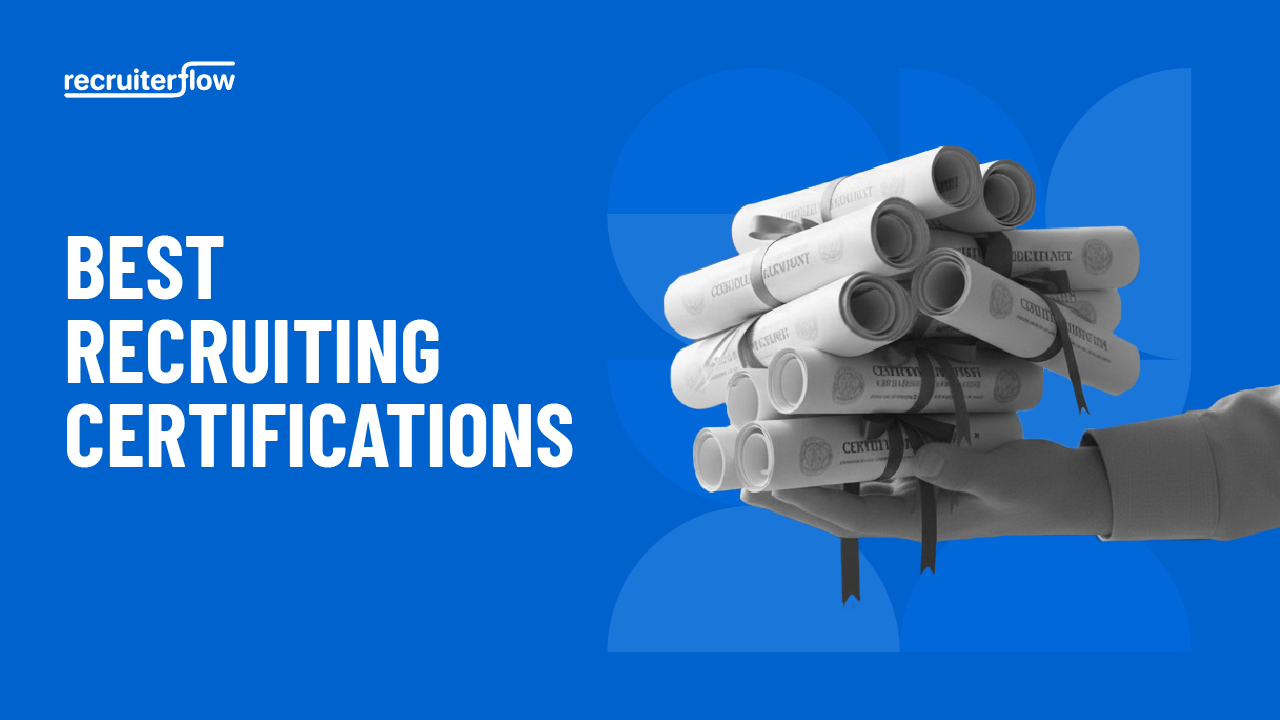
AI Candidate Matching: A Complete Guide
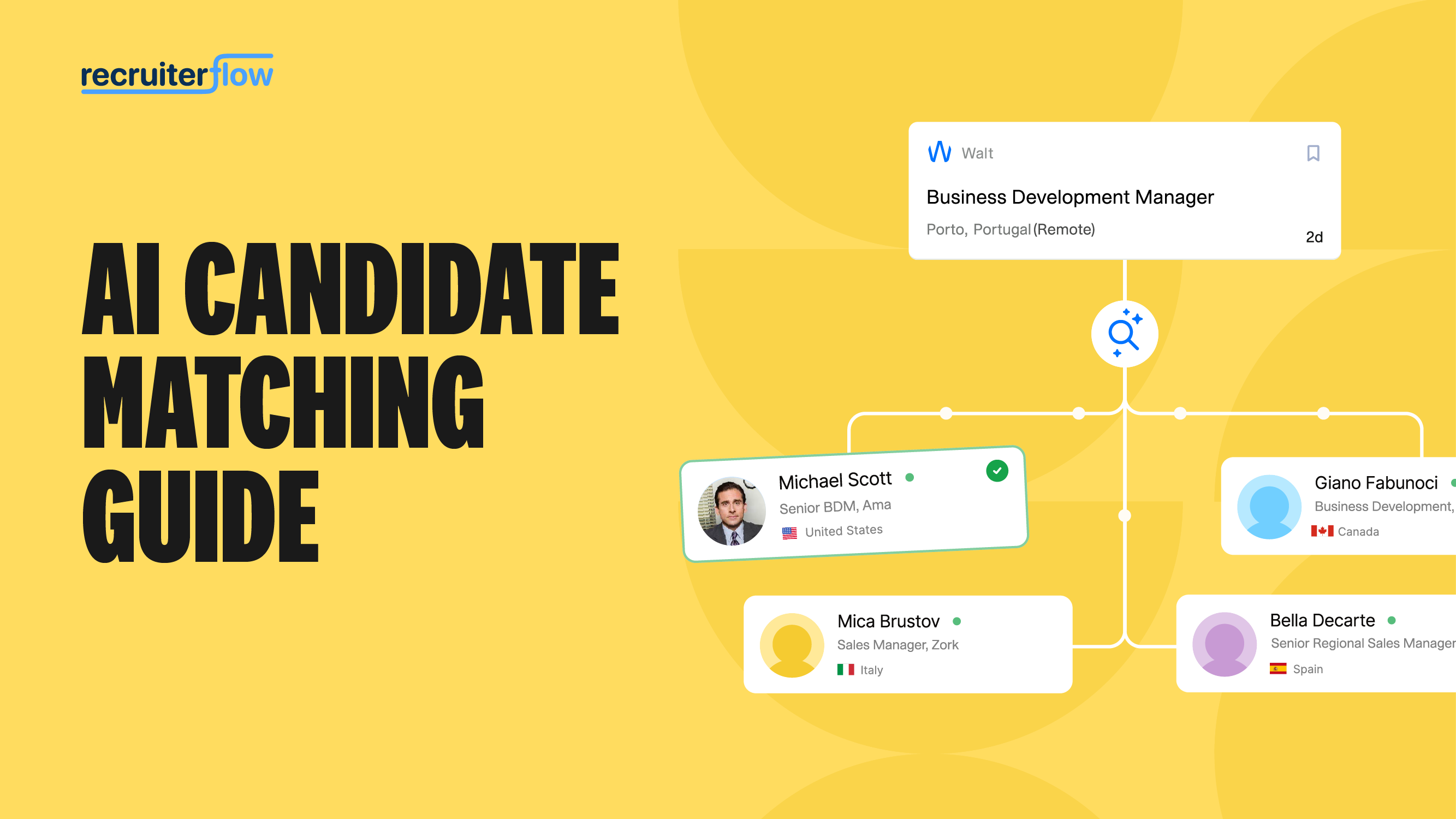
For recruitment agencies, success hinges on making the right connections – placing candidates who possess the necessary skills and align with a company’s culture and long-term goals.
Effective candidate matching goes beyond filling vacancies; it focuses on building lasting relationships, driving client satisfaction, and ultimately, boosting your agency’s reputation and bottom line.
This article introduces candidate matching, shows you how AI-driven candidate matching works, and then outlines the essential requirements for an agency looking to leverage AI tools effectively. It also provides guidance on what to look for when selecting AI-powered candidate matching software.
What is Candidate Matching?
Candidate matching is the process of aligning job seekers with suitable job openings by comparing their skills, experience, education, and personality traits to the requirements of available positions. The goal is to ensure that the right person is placed in the right job.
This process is fundamental in modern recruitment, as it streamlines hiring and improves placement rates and client retention.
How Candidate Matching Works
The candidate matching process can be manual or, more commonly today, automated through technology:
- Manual Matching: Recruiters review resumes and job descriptions for overlaps in qualifications, skills, and experience.
- Automated Matching: Recruitment platforms and Applicant Tracking Systems (ATS) use algorithms to analyze resumes & job postings and score candidates based on how well they fit the job criteria.
Key Criteria Used in Candidate Matching
Matching systems typically evaluate a range of criteria, including:
- Skills and competencies
- Work experience
- Education and certifications
- Preferred job roles and locations
- Personality traits and cultural fit
- Salary expectations
- Job type (full-time, part-time, contract)
- Availability and willingness to travel
These criteria can be marked as required (must-have) or desired (nice-to-have) for nuanced matching that prioritizes essential qualifications while also considering additional strengths.
Cut admin work, increase placements and let your recruiters focus on conversations, not spreadsheets. Discover how with Recruiterflow AI.
The Role of Technology in Candidate Matching
Modern candidate matching often relies on AI-powered tools and machine learning algorithms. These systems can:
- Parse and analyze large volumes of resumes quickly
- Compare candidate profiles to job requirements
- Assign a compatibility score to each candidate
- Rank candidates to help recruiters focus on the best fits
Some advanced systems, like the Candidate Match tool developed by Wharton professors, use hypothetical resumes to train algorithms to reduce bias and improve personalization.
This approach allows employers to fine-tune the matching process based on their unique preferences and requirements.
Two-Way Candidate Matching
A newer approach is the two-way matching framework, which not only assesses candidates for job fit but also helps candidates evaluate if a job suits their own preferences and career goals.
This is often achieved through situational judgment tests or realistic job previews, where candidates experience simulated work scenarios. This method helps both parties make informed decisions & leads to better long-term matches.
For instance, let’s say a company is hiring a software developer:
- Job Requirements: The company needs someone with expertise in Java, experience with cloud platforms, and a bachelor’s degree in computer science.
- Candidate Profiles: The ATS scans resumes and finds several candidates. It scores them based on how closely their skills, experience, and education align with the job description.
- Matching: One candidate, Chelsea, has five years of Java experience, is familiar with open source automation tools, and holds a relevant degree. She receives a high compatibility score.
- Outcome: Chelsea is shortlisted and invited for an interview, while the system also notifies her that this job matches her preferences and skills.
In a two-way matching scenario, Chelsea might also complete a coding simulation or a situational test to see if the company’s work style and expectations suit her. This ensures a good fit on both sides.
Tracking and Managing Matches
Once a candidate is matched to a job, recruitment systems track their progress through various stages:
- Added to the job
- Submitted for review
- Interviewed
- Offered a position
- Hired (or dropped, with reasons logged)
This tracking ensures transparency and helps recruiters manage multiple candidates and roles efficiently.
Also read: AI Screening: A Comprehensive Guide for Recruiters
Key Benefits of AI in Candidate Matching
Here’s a closer look at the key benefits of AI in candidate matching:
Efficiency That Saves Time and Money
AI-powered candidate matching platforms dramatically speed up the hiring process. Automating repetitive tasks like resume screening and candidate sourcing frees up recruiters to focus on building relationships and making strategic decisions.
In fact, AI can reduce time-to-hire by up to 50% and cut recruitment costs by as much as 30%. This efficiency is especially valuable in fast-paced industries where every day counts.
Better Matches, Better Hires
AI doesn’t just make hiring faster, it makes it smarter. Advanced algorithms analyze a wide range of factors, from skills and experience to cultural fit, to ensure that candidates are matched to roles where they’re most likely to thrive.
Agencies that use AI-driven recruitment tools have seen a 35% increase in the quality of their hires. Predictive analytics further enhances candidate matching accuracy by 67% to help organizations find the right people for the right jobs.
Data-Driven Insights for Smarter Decisions
AI platforms provide recruiters with deep, actionable insights into hiring trends, candidate sourcing effectiveness, and process bottlenecks. These data-driven analytics help recruitment agencies refine their outreach strategy.
Scale Recruitment Without Compromise
Whether hiring for a single role or scaling up for a major expansion, AI-driven platforms can handle large volumes of candidate data quickly and accurately.
A survey by Talent Tech Labs found that 65% of companies experienced improved scalability in their recruitment processes after implementing AI solutions. This means recruiting agencies can support more clients and fill more roles efficiently, without compromising on the quality or speed of their placements.
Reduce Bias and Promote Diversity
One of the most promising benefits of AI in candidate matching is its potential to reduce unconscious bias. AI-driven platforms focus on objective data to help level the playing field for all candidates.
Studies show that AI tools can reduce gender bias in job postings by up to 40% and improve workforce diversity by 35%. This not only fosters a more inclusive workplace but also drives innovation and better business outcomes. For an agency, this enhances alignment with client expectations and drives more high-quality submittals, delivering clear, agency-first outcomes.
Enhance the Candidate Experience
AI can create a more personalized and transparent experience for job seekers. Automated updates, tailored job recommendations, and faster feedback help candidates feel respected and informed throughout the process.
As a result, 75% of job seekers say they prefer AI-driven recruitment processes for the speed and clarity they provide.
Also read: Recruitment Automation in 2025: The Complete Guide
How AI-Powered Candidate Matching Works
Here’s a detailed look at how AI-powered candidate matching works, from the data it analyzes to the algorithms that drive its decisions.
1. Data Collection and Integration
The process begins with the aggregation of vast amounts of data from both candidates and job postings. This includes traditional resume information, such as skills, experience, education, and certifications, as well as less obvious data points like career trajectory, location preferences, salary expectations, and even cultural fit indicators.
Modern AI systems can also ingest unstructured data from cover letters, portfolios, and digital profiles to create a comprehensive view of each candidate.
2. Natural Language Processing (NLP) and Semantic Analysis
Unlike old-school keyword-matching tools, AI-powered systems use advanced Natural Language Processing (NLP) to understand the true meaning and context behind words in resumes and job descriptions.
This means the technology can recognize synonyms, related concepts, and even extract skills that candidates may not have explicitly listed but are implied by their experience.
For example, if a candidate has managed projects using Agile methodologies but didn’t list “Agile” as a skill, the AI can infer and include it.
3. Algorithmic Matching and Scoring
Once the data is processed, AI algorithms compare candidate profiles to job requirements using sophisticated matching engines.
These engines assign a match score often represented as a percentage or color-coded indicator-based on how well a candidate’s qualifications align with the job’s needs.
The algorithms weigh numerous factors, including:
- Hard skills and certifications
- Soft skills and personality traits
- Experience level and industry background
- Cultural fit and team compatibility
- Career aspirations and growth potential
- Location and availability
This holistic approach ensures that matches aren’t just about ticking boxes, but about finding candidates who are likely to thrive and stay in the role.
4. Continuous Learning and Improvement
AI matching systems learn and adapt over time. Analyzing feedback from recruiters, successful placements, and candidate outcomes allows machine learning algorithms to refine their matching logic and improve accuracy with every cycle.
This means the more you use an AI-powered system, the better it gets at understanding your agency’s unique needs and preferences.
A Real-World Example of an AI-powered Candidate Matching System
Recruiterflow’s AI Candidate Matching System helps recruitment agencies and hiring teams quickly and accurately identify the best-fit candidates from their existing talent pool.
Here’s a detailed look at how the system works, using the scenario of finding a Senior Software Engineer as an example.
Step 1: Job Creation and Requirement Input
The process begins when you create a job posting in Recruiterflow–you specify all the necessary details, such as required skills (e.g., Python, AWS, Amazon ECS, React), experience level (e.g., 5+ years), and any other relevant criteria. This information forms the foundation for the AI’s search and matching process.
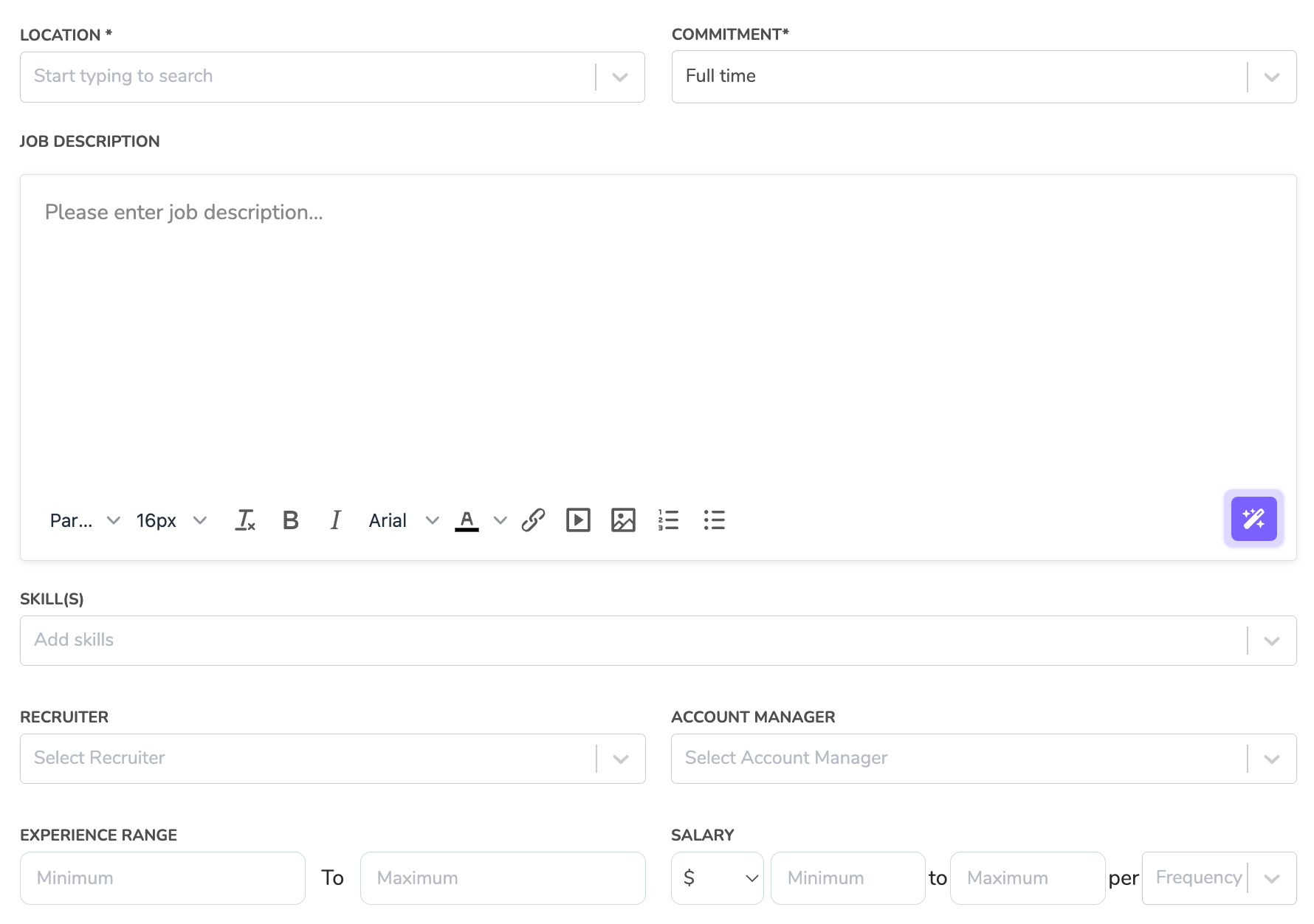
Step 2: AI-Powered Candidate Search
Once the job is set up, navigate to the ‘AI Matches’ card within the job dashboard and click ‘Generate’. Recruiterflow’s AI, trained on half a billion data points, analyzes the job requirements and scans your agency’s candidate database to find profiles that best match the open position. This process takes just a few minutes, regardless of the database size.
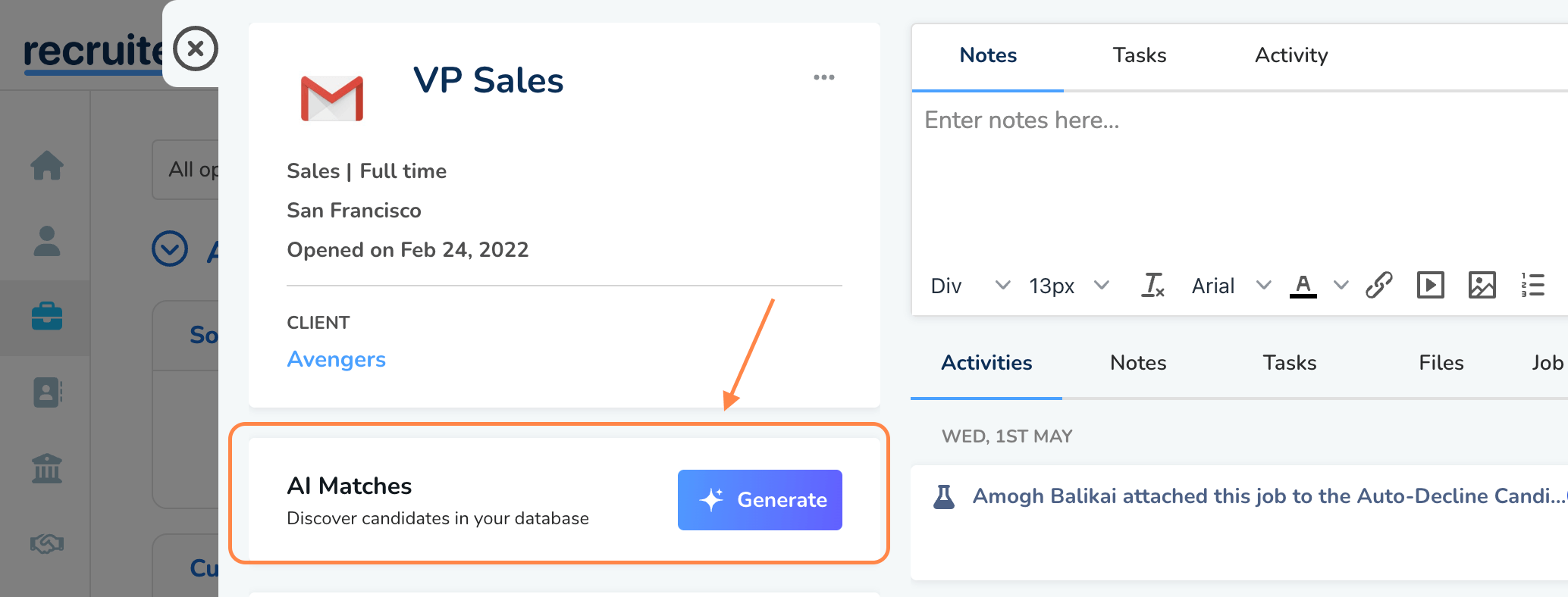
Step 3: Ranking and Shortlisting
The AI system generates a ranked list of candidates, sorted from most to least relevant based on their fit with the job requirements. This ranking considers multiple factors, including skills, experience, industry background, and previous interactions with the agency. The recruiter can immediately see which candidates are the strongest matches for the role.
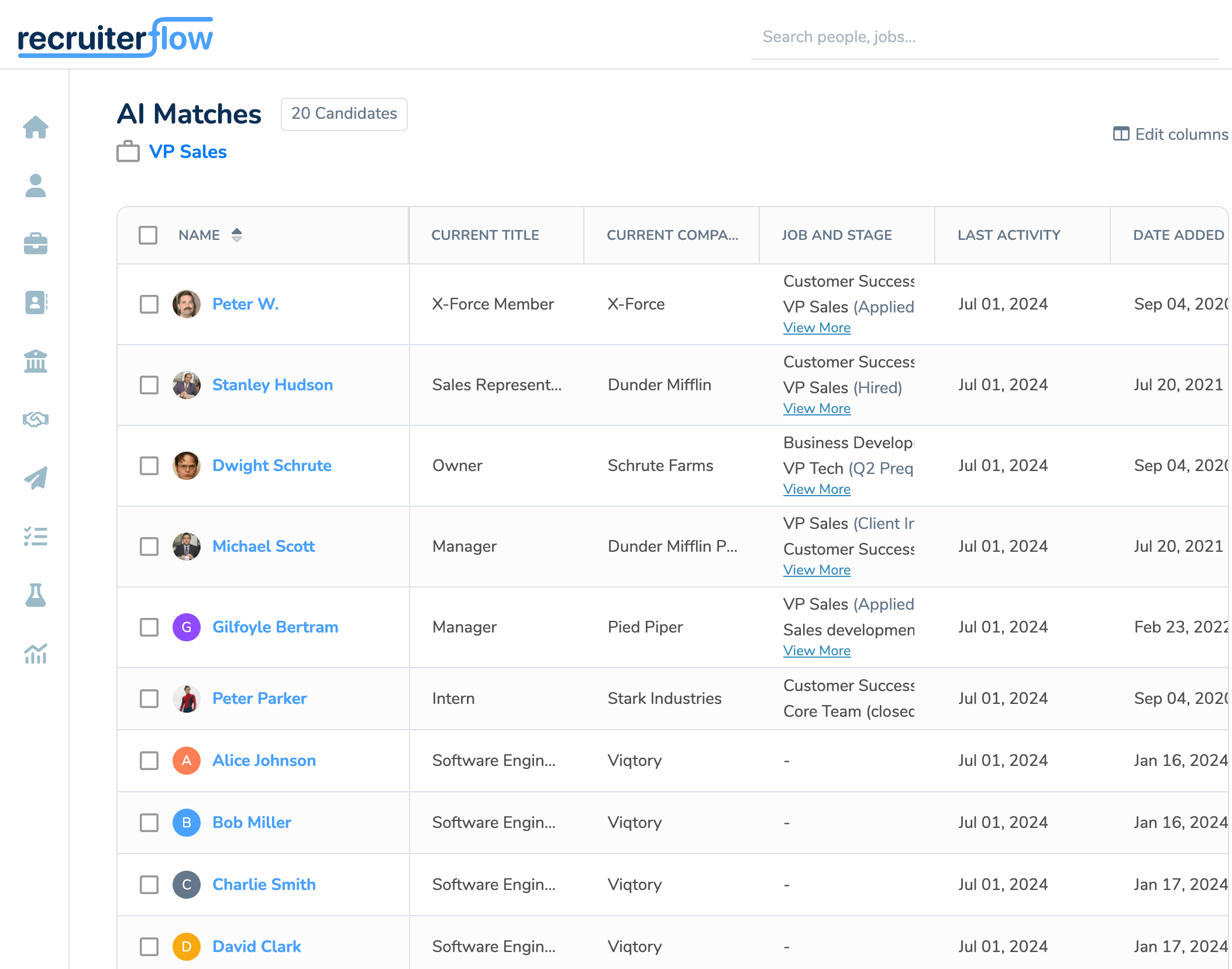
Step 4: Advanced Filtering and Human Review
To further refine the results, recruiters can apply additional filters, such as industry, location, or salary expectations, using Recruiterflow’s built-in search tools. This allows for a more tailored shortlisting of only the most suitable candidates.
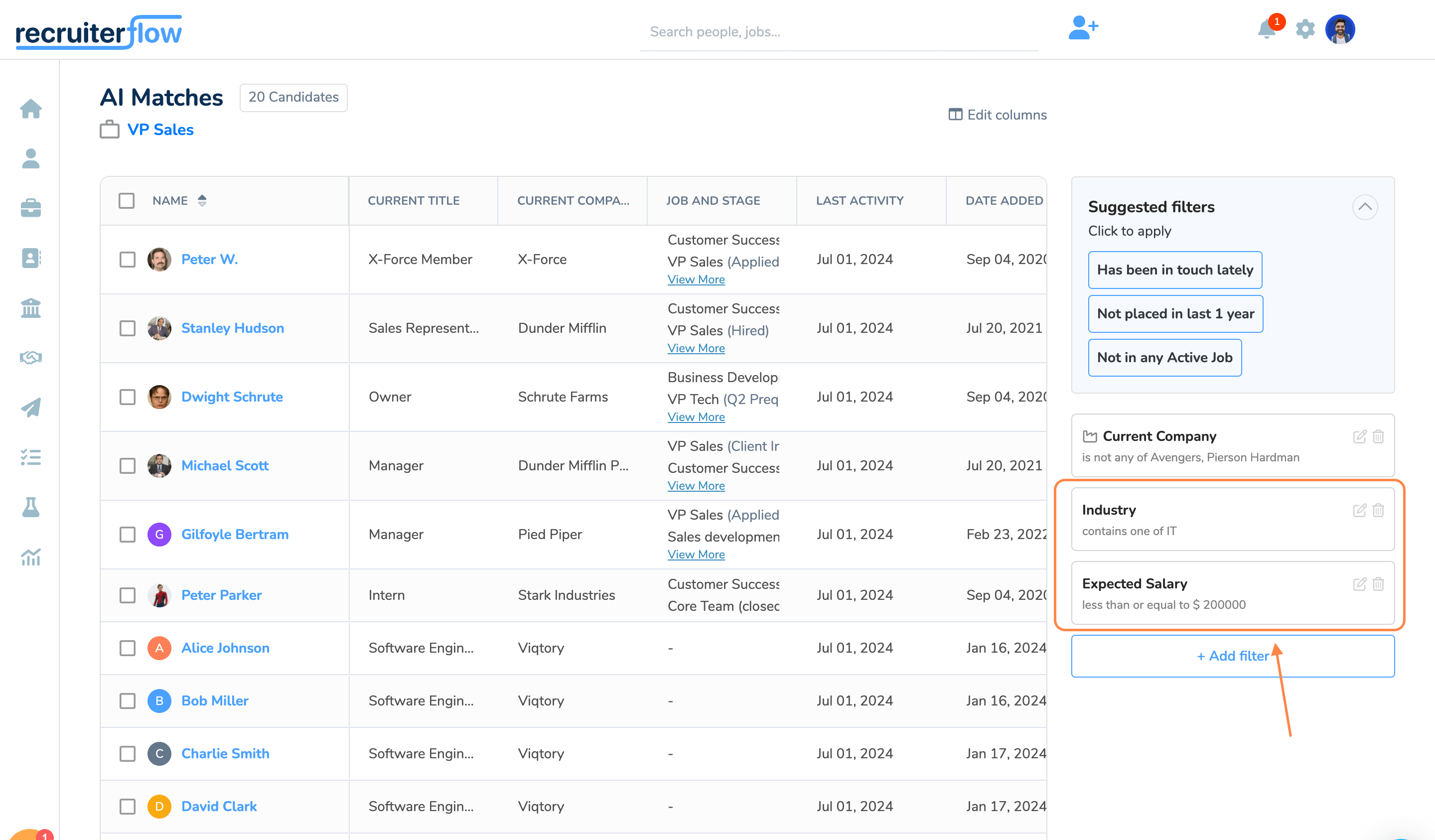
After filtering, recruiters review the top profiles in detail. Each candidate’s profile includes a comprehensive work history, skill set, and a record of all past interactions. If a candidate is deemed a perfect fit, the recruiter can add them directly to the job’s shortlist for the next stage of the hiring process.
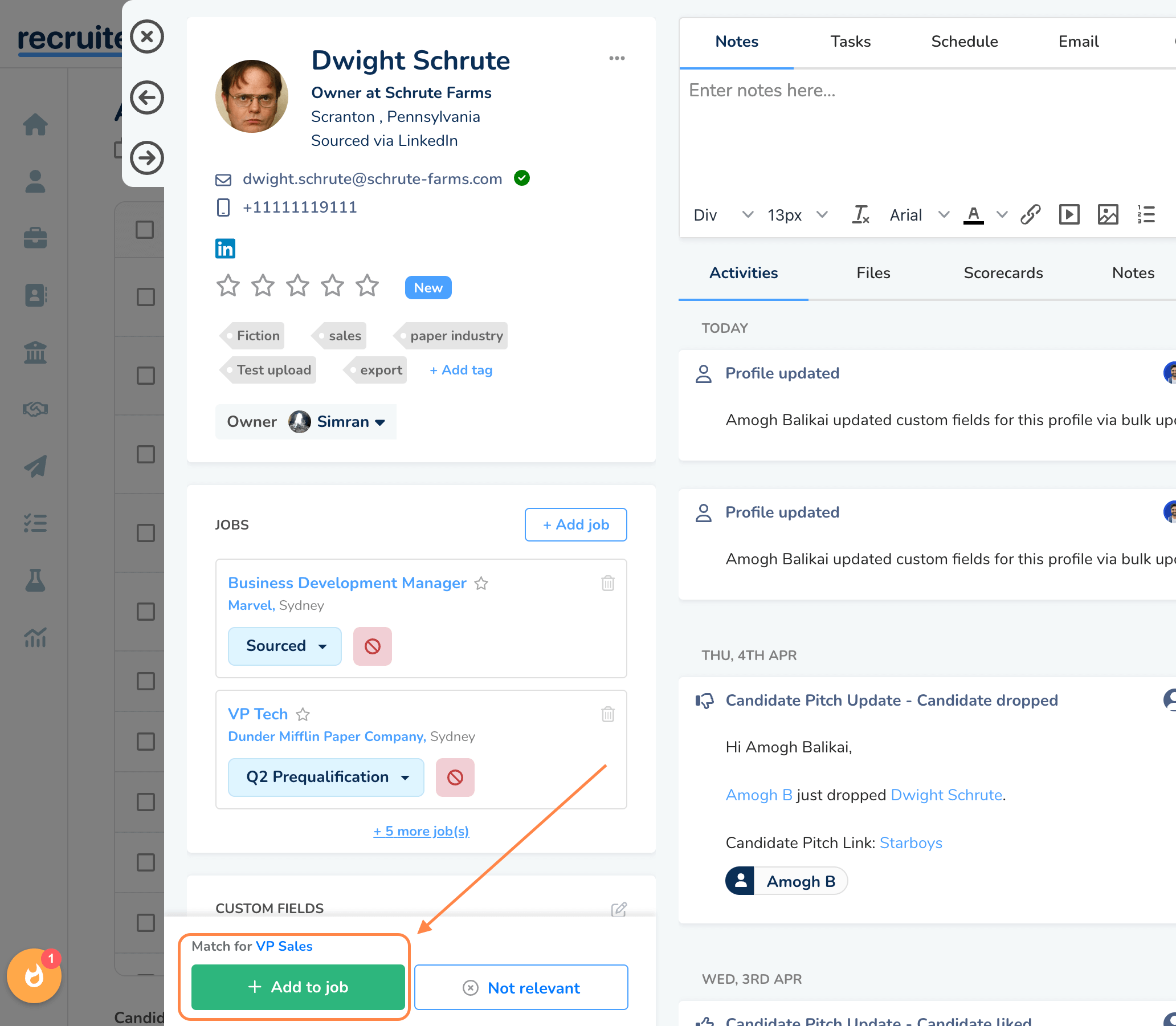
Step 5: Feedback and Continuous Learning
Recruiterflow’s AI system is designed to learn and improve over time. If a recruiter finds a candidate irrelevant (e.g., lacking the required experience), they can provide feedback, such as “Candidate should have at least 5 years of experience.” The AI incorporates this feedback to enhance future matching accuracy, making the system smarter with every use.

What Will an Agency Need to Leverage AI Tools for Candidate Matching?
AI-powered candidate matching tools promise faster, more accurate hiring, but for agencies to truly leverage their potential, they must lay a strong foundation. Here’s what an agency needs to successfully harness AI for candidate matching.
1. High-Quality, Structured Data
- Clean, comprehensive candidate profiles: AI tools rely on detailed resumes, cover letters, and work histories. Missing or poorly formatted data can lead to inaccurate matches.
- Standardized job descriptions: Clearly defined roles with specific requirements help AI understand what to look for in candidates.
- Ongoing data hygiene: Regularly updating and cleaning your database ensures the AI works with the most relevant information.
2. The Right Technology Stack
- AI-powered ATS/CRM: Modern Applicant Tracking Systems (ATS) and Candidate Relationship Management (CRM) platforms like Recruiterflow come with built-in AI matching features.
- Third-party integrations: For agencies using legacy systems, integrating external AI tools via APIs can extend capabilities without a full system overhaul.
- AI Candidate sourcing tools: Platforms like PeopleGPT and HireEZ use AI to scan the web and databases for hidden candidates and help you expand your reach beyond traditional sources.
3. Integration and Interoperability
- Seamless system connections: AI tools should integrate smoothly with your existing ATS, CRM, and communication platforms to avoid data silos and manual workarounds.
- Automated workflows: Look for solutions that automate repetitive tasks such as resume screening, interview scheduling, and candidate communication.
4. Skilled Human Oversight
- Recruiter training: Teams need to understand how AI matching works, its strengths, and its limitations. Training ensures recruiters can interpret AI recommendations and make informed decisions.
- Human-in-the-loop: AI should augment, not replace, human judgment. Final hiring decisions and nuanced candidate assessments still require a human touch.
5. Data Privacy and Compliance
- GDPR and local regulations: Ensure your AI tools are compliant with data privacy laws, especially when handling sensitive candidate information.
- Transparent AI: Choose vendors who can explain how their algorithms work and what data they use. This helps you maintain ethical and unbiased hiring practices.
6. Change Management and Buy-in
- Stakeholder engagement: Involve recruiters, hiring managers, and IT early in the process to drive adoption and address concerns.
- Clear communication: Explain the benefits of AI matching, such as reduced time-to-hire and improved candidate quality, to build enthusiasm and trust.
Also read: 15 Best AI Recruiting Tools of 2025 [Free + Paid]
What to Look for in AI-Powered Candidate Matching Software
AI-powered candidate matching software helps automate tedious tasks, improve match accuracy, and enhance the overall hiring experience for both recruiters and candidates.
But with a growing number of solutions on the market, how do you choose the right one for your organization? Here’s a comprehensive guide on the essential features and considerations to keep in mind.
1. Matching Accuracy and Intelligence
The core value of any candidate matching software lies in its ability to accurately pair candidates with roles. Look for platforms that go beyond simple keyword matching.
The best solutions use advanced machine learning algorithms and semantic analysis to understand the true meaning behind job requirements and candidate qualifications. These tools consider skills, experience, culture fit, and even career trajectory.
Some systems leverage vector databases and probabilistic models to find hidden candidates and recognize transferable skills that traditional methods might miss.
2. Holistic Approach That Reduces Bias
AI can help reduce unconscious bias by using objective, data-driven criteria for matching, which can lead to fairer and more inclusive hiring processes.
Top-tier platforms analyze not just hard skills but also soft skills, cultural alignment, and even potential for growth. This results in more relevant and successful placements.
3. Automation and Time-Saving Features
One of the biggest advantages of AI-powered matching is the automation of repetitive tasks. Effective software should be able to:
- Instantly screen thousands of resumes
- Automate candidate shortlisting
- Schedule interviews
- Send personalized communications and reminders
This frees recruiters to focus on higher-value activities, such as engaging with top candidates and building relationships with clients.
5. Transparency and Explainability
Recruiters and hiring managers need to trust the AI’s recommendations. Choose a software that offers transparent match scores and visual explanations for why a candidate is a good fit for a role. This transparency helps build confidence in the system and supports better decision-making.
6. Continuous Learning and Adaptation
The best AI matching systems continuously learn from successful placements, recruiter feedback, and candidate outcomes. This adaptive approach ensures that the software becomes more accurate and tailored to your organization’s unique hiring patterns over time.
7. Integration and Ease of Use
Recruitment teams are often juggling multiple tools. Ensure the candidate matching software integrates seamlessly with your existing applicant tracking systems (ATS), HR platforms, and communication tools. An intuitive, user-friendly interface is also essential for quick adoption and minimal training.
8. Data Security and Compliance
Handling sensitive candidate data requires robust security measures. Confirm that the software complies with all relevant data privacy regulations (such as GDPR) and has strong protocols to protect candidate information from breaches.
9. Vendor Reputation and Support
Research the vendor’s track record, customer reviews, and support options. Reliable vendors offer responsive customer service, regular updates, and clear documentation to help you get the most out of the platform. A trial period or demo can also be invaluable for assessing fit before committing.
You can also read our blog on AI in Recruitment Market to explore how AI is transforming recruitment industry.
Key Features Checklist
| Feature | Why It Matters |
| Advanced semantic matching | Finds best-fit candidates beyond keyword matches |
| Customizable algorithms | Lets you tailor the system to your unique roles and company culture |
| Bias reduction | Promotes fair, inclusive hiring |
| Automation of repetitive tasks | Saves time, boosts productivity |
| Transparent match explanations | Builds trust and supports better decisions |
| Continuous learning | Improves accuracy over time |
| Seamless integrations | Fits easily into existing workflows |
| Strong data security | Protects sensitive information, ensures compliance |
| Vendor reliability | Ensures ongoing support and product improvement |
Best Practices for Maximizing Your AI Recruitment Tools
1. Define Clear Objectives
Pinpoint your biggest recruitment challenges–whether it’s reducing time-to-hire, improving diversity, or enhancing candidate experience–and set measurable goals.
2. Train Your Team
Invest time in onboarding and ongoing training to ensure your team is comfortable with the software and knows how to interpret its recommendations.
3. Continuously Refine Algorithms
Regularly review and adjust your matching criteria based on feedback and outcomes. AI learns over time, but human oversight ensures it stays aligned with your evolving needs.
4. Prioritize Data Privacy
Make sure your software complies with relevant data protection regulations and that your team understands how to handle candidate data responsibly.
5. Gather Feedback
Solicit input from both recruiters and candidates to identify pain points and areas for improvement. Use this feedback to fine-tune your processes and software settings.
Also read: Must-Have Features in Your Recruitment Software
FAQs about Candidate Matching
What criteria are used in candidate matching?
Candidate matching typically considers multiple factors, including:
- Technical and soft skills
- Professional experience
- Educational background
- Certifications and licenses
- Language proficiency
- Location and availability
- Cultural fit and values (in some advanced systems)
The importance of each criterion can be weighted based on the specific needs of the job or organization.
How accurate is candidate matching technology?
While candidate matching technology has made significant strides, its accuracy depends on several factors:
- The quality and completeness of the job description and candidate profiles
- The sophistication of the algorithms used (e.g., whether they account for synonyms, context, and evolving industry terms)
- Regular updates to the system’s reference data to reflect new skills and job titles
Human oversight is still essential to catch nuances that algorithms might miss, such as cultural fit or potential for growth.
Also, check out our blog to explore the key benefits of using AI in recruitment.
Can candidate matching help with urgent or specialized hiring needs?
Absolutely. Candidate matching technology is especially valuable when recruiters need to fill positions quickly or are searching for candidates with rare or highly specific skills. The automation and precision of these tools allow organizations to identify suitable candidates much faster than manual screening alone.
How do candidate matching systems handle evolving job requirements and new skills?
To remain effective, candidate matching systems must be regularly updated to recognize new industry terms, skills, and job titles. This involves continuous data collection, context analysis, and refinement of the algorithms to ensure they stay current with changing workforce trends.
Are there any limitations to candidate matching?
Yes, while candidate matching technology is powerful, it’s not infallible. Limitations include:
- Potential bias if the underlying data or benchmarks are not representative
- Difficulty capturing soft skills or cultural fit without additional assessments
- Dependence on accurate, up-to-date job descriptions and candidate information
Human judgment remains a critical component of the final hiring decision.
How can candidates improve their chances of being matched to the right job?
Candidates should ensure their resumes are clear, detailed, and tailored to each job application. Highlighting relevant skills, certifications, and achievements using keywords from the job description can increase the likelihood of being identified as a strong match by automated systems.
Learn How Our AI-Powered Recruitment Platform
Can Help Your Agency
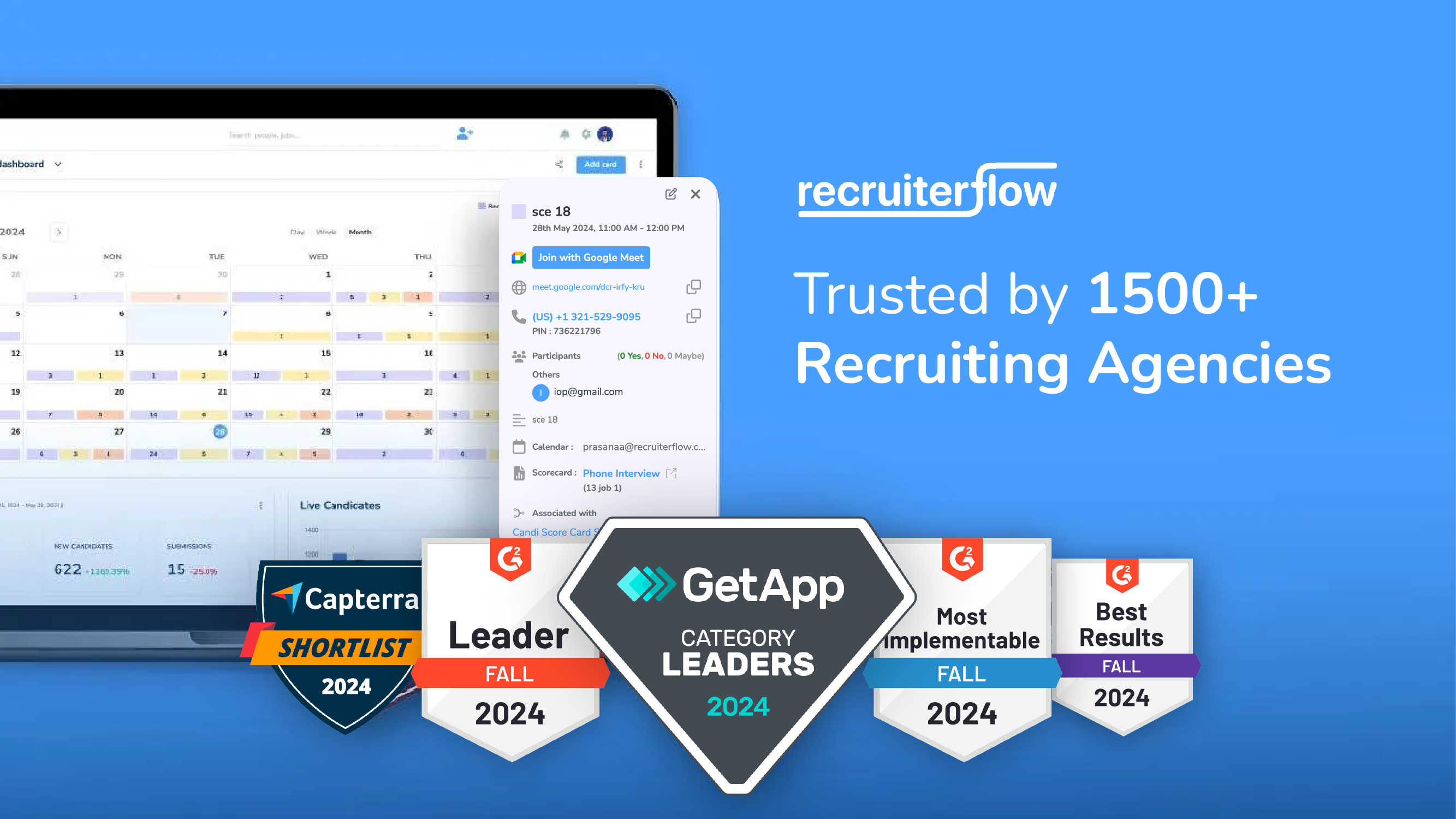
Recruiterflow offers a comprehensive suite of features, tailored specifically for recruiting & staffing firms, beyond its AI candidate matching system. It’s an all-in-one AI recruitment software that helps your agency manage all its recruitment operations:
- AI-first screening and sourcing tools
- AI recruiting assistant
- Unified ATS & CRM
- Centralized candidate database
- Automated, multi-channel outreach (Email, SMS, Call & Socials)
- No-code recruiting automation
- Data enrichment capabilities
- Advanced reporting and analytics
- Open APIs and a host of integrations
Hudson B., CEO & Founder, reviewed us on G2Crowd:
“We’ve been using RecruiterFlow for the past two years and it has streamlined our recruiting process. The platform has a user-friendly interface and automation tools that help us efficiently manage candidate pipelines, reduce manual tasks, and communicate with clients. It serves as the command center for our recruiting operation, allowing us to focus on building relationships. They have exceptional customer success, is quick to assist, eager to hear feedback, and committed to product development. I recommend it to any small agency looking to optimize its workflows.”
See it in action now: Book a free demo.
Recruitment



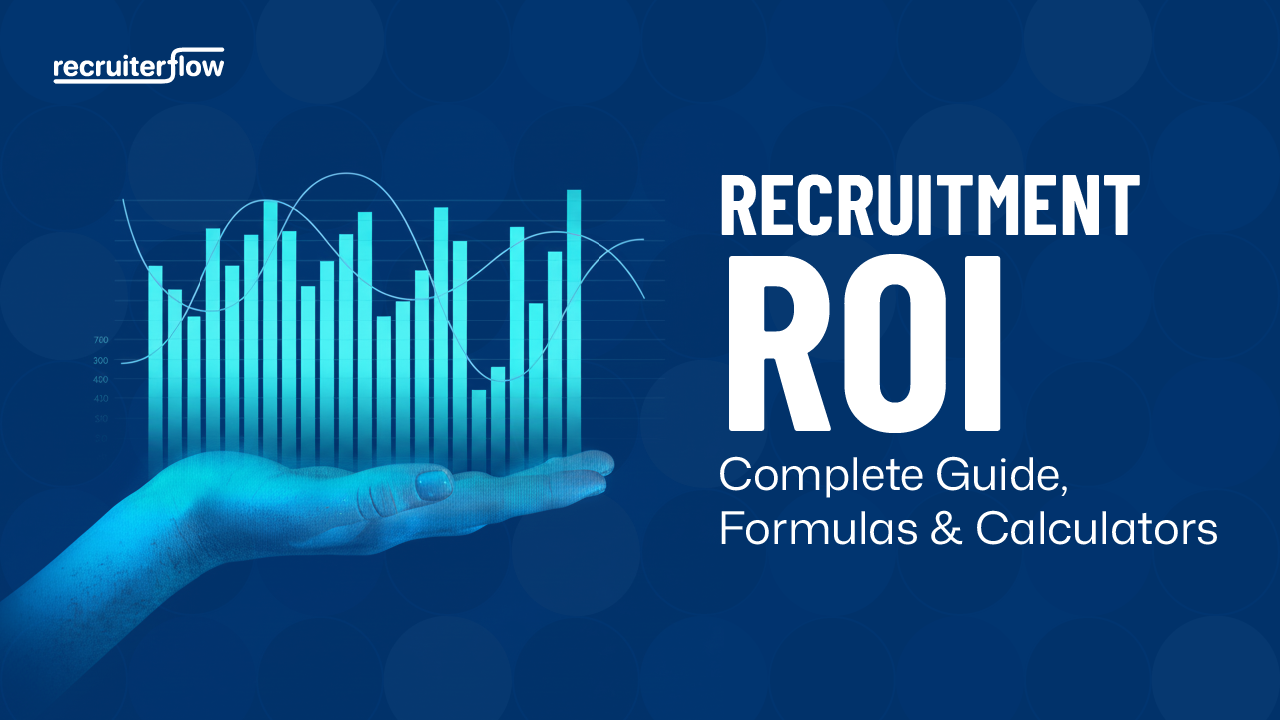
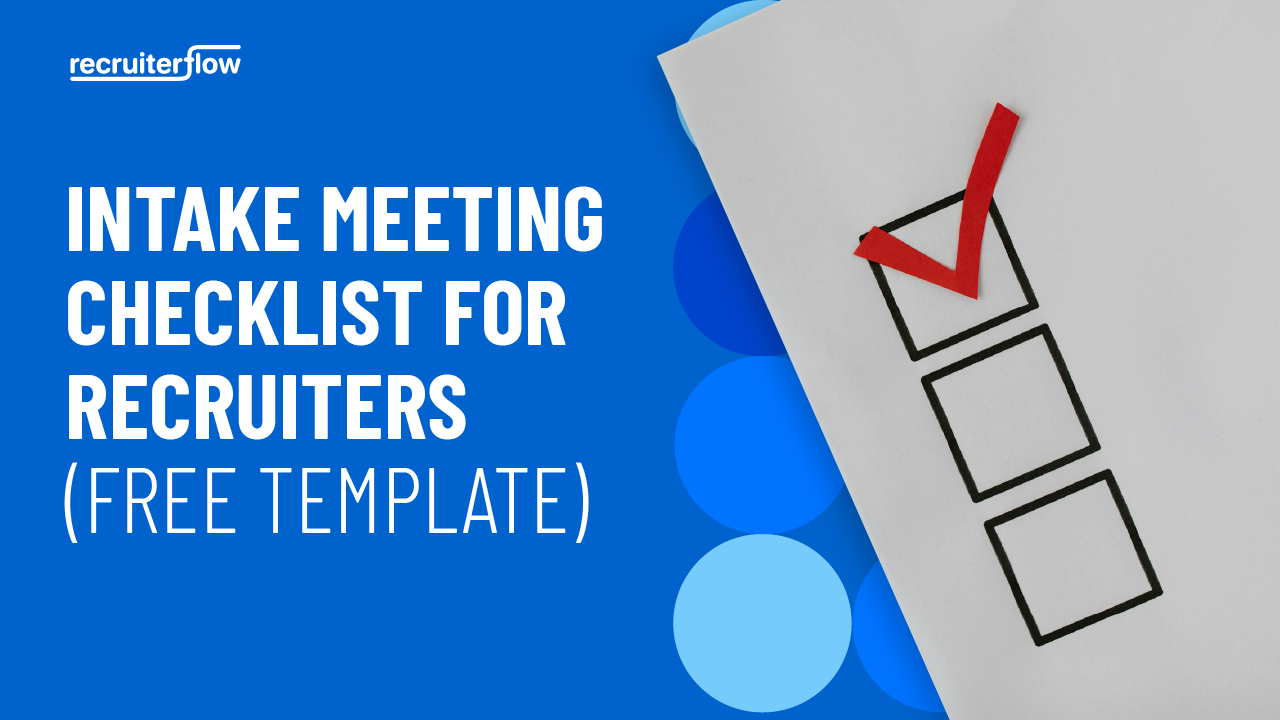

Pragadeesh Natarajan